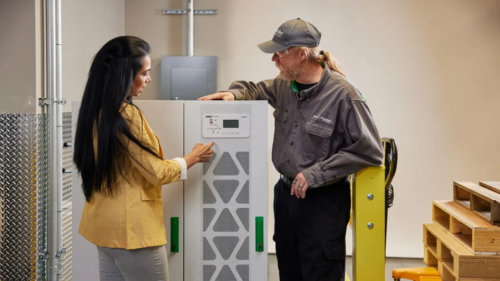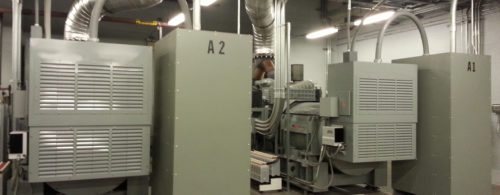What Drives Drive Specifications?
Whatever the process, when electrical equipment malfunctions or cannot operate to keep pace with work demands, the result is lowered productivity. Analyzing it more carefully, the problem may be a result of limited capacity, aging or obsolete infrastructure, or poor power quality. When it comes to variable-frequency drives (VFDs), any of the above may apply.
Whatever the process, when electrical equipment malfunctions or cannot operate to keep pace with work demands, the result is lowered productivity.
Analyzing it more carefully, the problem may be a result of limited capacity, aging or obsolete infrastructure, or poor power quality.
When it comes to variable-frequency drives (VFDs), any of the above may apply. But with good planning, maintenance and diligent attention by competent electrical engineers, older equipment can be retrofitted or replaced to accommodate a facility’s needs.
Whether one is adding a major piece of equipment, planning a major renovation or designing for a new structure, it’s essential to know the immediate power requirements, as well as those anticipated for future needs.
The first point to keep in mind when considering a VFD retrofit is that they’re really only justified when its motor will require significant periods of reduced speed operation in response to external parameters such as temperature and pressure. In other words, if a system has wide load swings, VFDs makes sense. But for applications where the load varies only occassionally, it would be a wasted expense.
Second, if a decision has been made to proceed, the drive’s location must be determined. The type of equipment being driven will dictate whether a VFD should be installed close to that piece of equipment, or closer to an isolation transformer with which it has been provided.
Finally, the drives used for all the various types of load are the same; the only difference is that the power rating is adjusted. The key here is that for a drive retrofit, consulting engineers need to be able to check nameplate and manuals for all of a facility’s equipment to determine load requirements. Just specifying the horsepower is not enough.
VFDs are found in industrial processes and engineered building systems. It’s important to understand the application and the right type of equipment for the specific application. There are four important points about specifying VFDs:
-
VFD size must match the load.
-
Options must be included to control harmonics.
-
Enclosures must be right for the environment.
-
Controls for the VFD must be appropriate.
Load considerations
The basic load types are:
-
Constant torque, which is usually found in industrial and process loads.
-
Constant horsepower, which one normally finds with machine tools and the like.
-
Variable torque, which is usually the type of load with pumps, fans and blowers.
-
Impact load, which means a wide variety of heavy equipment such as crushers, conveyors and presses.
Naturally, a discussion of load leads to the next general concern in VFD specification: power quality issues, specifically, harmonics. Virtually all voltage deviations and disturbances between equipment and their power sources are related to load changes. One example would be a step load, where a load is abruptly added or removed. When the load current suddenly changes, the voltage in the path also abruptly changes, then gradually recovers. These disturbances tend to decay rapidly with time, but can create timing errors or cause computers to lock up.
And starting large motors can create temporary voltage drops. This phenomenon with larger motors can be mitigated through soft-start or VFD controllers. Similarly, because starting large motors can also affect a utility and its other customers, a utility can levy a penalty against the owner for problems that affect other customers on the line. The problem is that VFDs and soft-starts are exactly the kinds of equipment that create harmonics.
Controlling harmonics
Harmonics are more than just a nuisance. They can create quality problems that are difficult to isolate. Harmonics are sinusoidal components of a periodic waveform with a frequency that is an integral multiple of the fundamental frequency and can affect both the voltage and current waveforms. On a scope, the normal sine wave appears with anomalies, indicating that something is altering the waveform. Harmonics are produced by non-linear loads, switching-type power supplies usually used in computers and electronic lighting ballasts—and in VFDs. Harmonics can destroy a motor, and typical sources of these harmonics are the inverters inside inside a VFD. The VFD’s inverters convert AC voltage into DC and then invert it back into AC, creating high-order frequencies that can ruin a motor. And an important point for system designers to remember is that the motors that are most in danger from the harmonics created by a VFD are the ones connected directly to VFDs. But there are ways to shield VFD-controlled motors from the harmful effects, including:
-
Use of inverter-duty motors that can reduce the affects of overvoltages.
-
Load reactors, installed on the VFD outputs, that reduce harmonics. They also help reduce audible noise caused by the high carrier frequency—but these must not be oversized, because it will affect the overall efficiency of the VFD.
-
Thermal protection devices that detect overheating in the motor.
-
The dv/dt filter, which is often used to protect an existing motor that is being connected to a VFD.
Motors and drives, in turn, are the victims of power anomalies. Transient over-voltages can cause nuisance tripping of VFDs. Small transients do not usually cause immediate failures in electronic equipment, but instead, cause a gradual degradation of the equipment. After suffering from numerous transients, equipment can fail, without detectable cause.
Enclosures and controls
When it comes to specifying enclosures for the drives, naturally, one must consider NEMA ratings. Standard enclosures for VFDs are NEMA 1, 12 and 4. The latter is typically found in process and wastewater applications.
A final consideration is how to control drives: either manually or via a programmable logic controller. Most VFDs offer built-in electronic keypad control. The type of control system specified can depend a lot on the facility’s staff and what they are comfortable with.
Above all, plan for replacement of system components when they are approaching the end of their normal lifespan. Putting a program into practice introduces safety, efficiency and reliability.
Sizing Motors and Drives for Retrofits
Drive and motor manufacturers are well aware of the difficulties faced by designers and specifiers who must match the load served with the right kind of equipment. That’s why their websites and electronic catalogs offer plenty of assistance to the specifier. Some even provide software tools to calculate energy and performance of drives and motors.
In specifying motors for any type of application, there are some key things that the specifer needs to know. Specifying a motor depends on a knowledge of:
Horsepower and torque for load to be operated.
Enclosure type required.
Motor horsepower and speed.
First cost, life-cycle cost and operating cost.
Available and preferred voltage.
Phase and frequency.
Motors are said to consume some 63% of electricity in the U.S. industrial sector, so when it comes to saving energy, retrofitting drives and motors is often the place facility owners will start. Fort Smith, Ark.-based Baldor Electric, for example, helps specifiers in the latest version of its electronic catalog by not only offering product information, but also what it calls the BE$T energy $avings Tool, which calculates an existing motor’s annual electricity usage based on its nominal efficiency vs. the annual electricity usage of its premium efficiency motors. It is also able to calculate savings on a group of motors. In addition, BE$T can calculate energy savings when a variable-frequency drive is used.
Once a motor or drive has been installed, one new offering is “built-in” maintenance. New Berlin, Wis.-based ABB now has the Built-in Maintenance Assistant, which is said to make its HVAC drives and driven-equipment care easier. The assistant helps users schedule maintenance of the drive and its associated equipment in stand-alone applications where no building management system is installed, which improves the performance and reliability of the HVAC system.
The Maintenance Assistant can prompt users to perform a maintenance task within specific time intervals, or when equipment fails to meet performance criteria. The drive monitors energy consumption, running hours or motor revolutions. Users can set their own limits for these and other items, so that the drive gives an alarm whenever limits are reached, flagging when the drive, motor or driven equipment should receive preventive maintenance.
Do you have experience and expertise with the topics mentioned in this content? You should consider contributing to our CFE Media editorial team and getting the recognition you and your company deserve. Click here to start this process.




